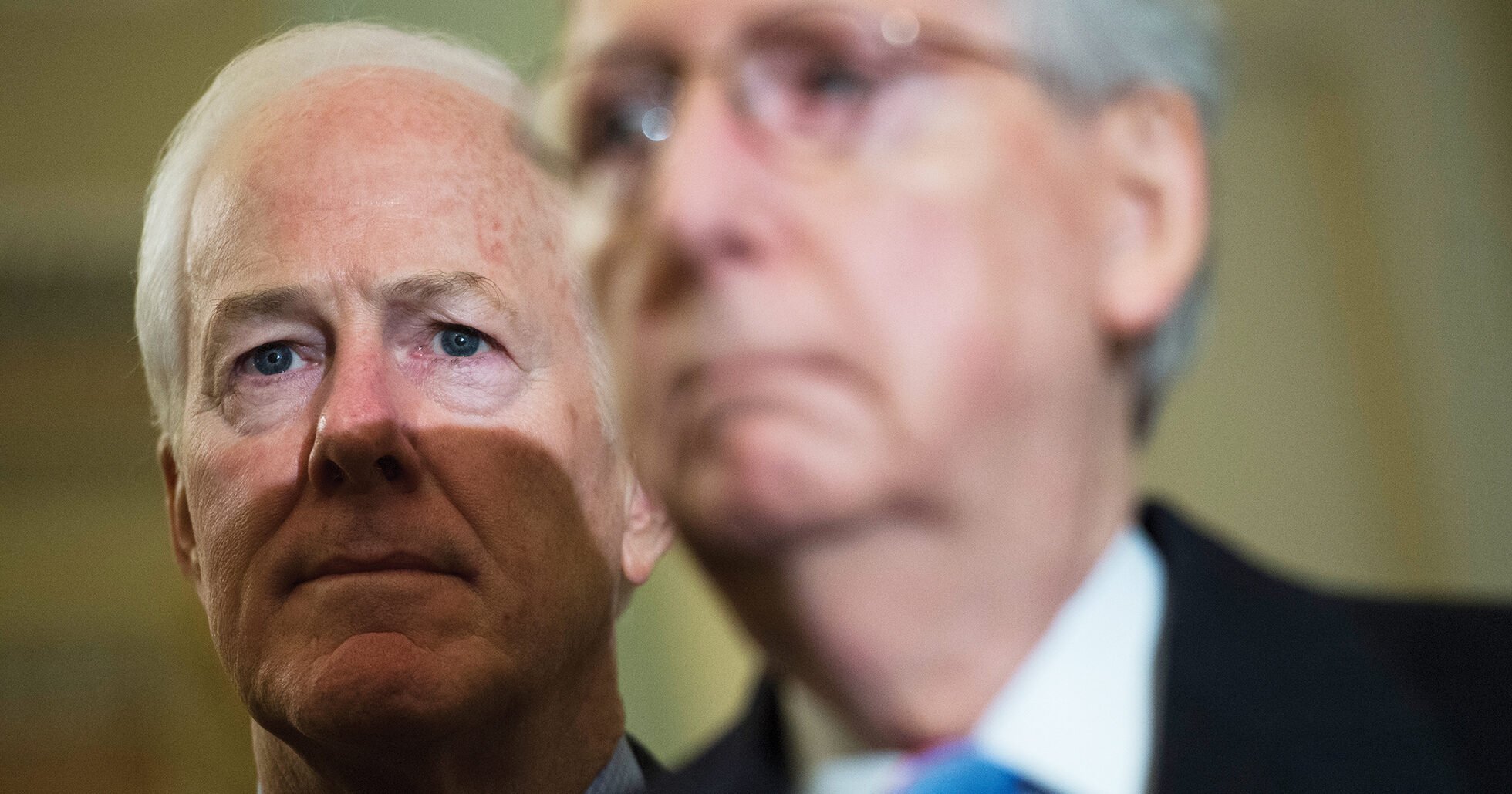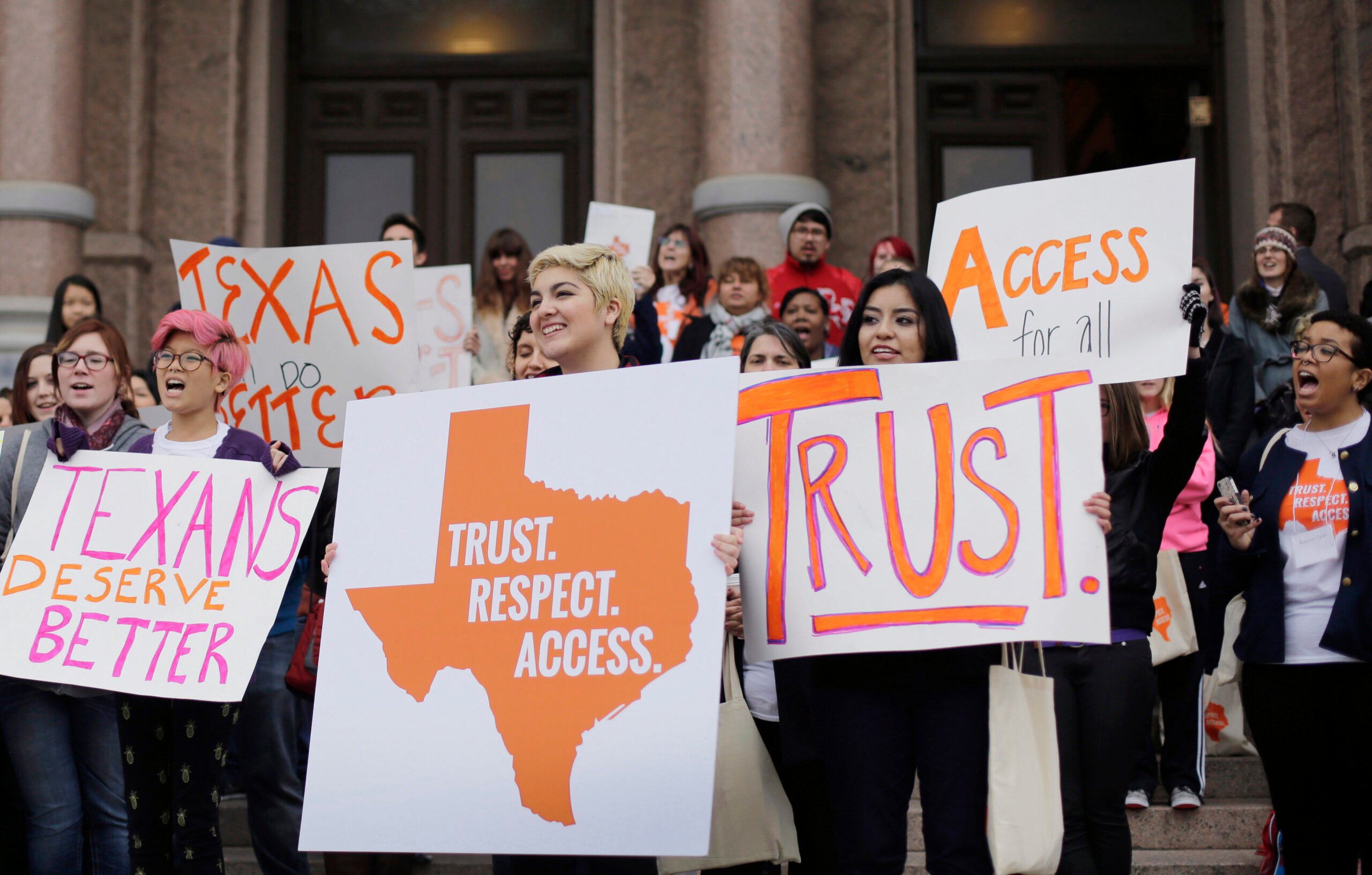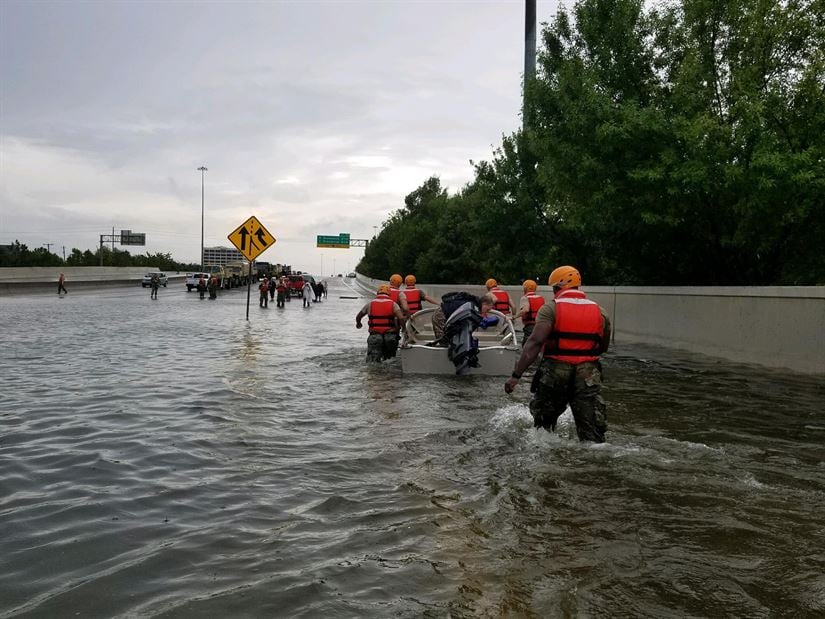
Trump Administration Report: Climate Change Is Hurting Texas
If greenhouse gasses aren’t curbed, the Texas economy will likely face devastating consequences from climate change.

Above: Texas National Guard soldiers arrive in heavily flooded areas after Hurricane Harvey in August 2017.
Sea levels along the Texas coast could rise by as much as 8 feet by 2100, submerging parts of the Galveston and Corpus Christi shoreline. Temperatures may increase by as much as 8.4 degrees by the end of the century, making outdoor workers even more vulnerable to heat-related illnesses. More intense hurricanes like Hurricane Harvey could hit the Texas coast. And extreme swings from prolonged droughts to heavy rainfall could ravage the state’s agricultural industry. Those are just a few of the climatic trends in store for Texas if drastic reductions to greenhouse gases aren’t begun immediately, according to a new federal report.
The congressionally mandated report, released on Black Friday by the Trump administration, lays out in stark and granular detail the numerous consequences the country is already facing as a result of climate change. It also paints a disturbing picture of the havoc that awaits the United States if radical changes are not made to reduce carbon emissions. At 1,656 pages, the National Climate Assessment is the result of three years of work by more than 300 government officials, academics and researchers from the private sector.
Texas is particularly prone to the ill effects of climate change because the state’s climate is already extreme, said Katharine Hayhoe, a climate scientist at Texas Tech University and one of the authors of the report. “We are one of the most vulnerable, if not the most vulnerable state, to a changing climate because it’s taking these natural weather events like hurricanes, droughts, heat waves, heavy rainfall events and flooding and it’s exacerbating them.”
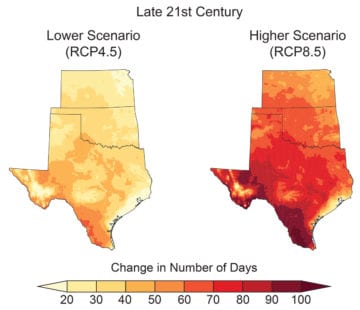
That means bracing for more intense wildfires in the Panhandle, more heavy Hurricane Harvey-like rainfall along the coast, prolonged droughts like that of 2011, hotter summers and warmer winters. The Texas economy is already feeling the effects. Since 1980, the state has been hit by more than 100 such extreme weather events that cost over $1 billion. But things could get much worse. If the planet keeps on the current trajectory of greenhouse emissions, more than $30 billion in Texas coastal property is in jeopardy of being swamped by 2050.
The so-called food-water-energy nexus is also in jeopardy, according to the report. As temperatures rise and water becomes more scarce, water for irrigation will be limited, leading to a reduction in the number of acres of crops grown. During the 2011 drought, for instance, rice in Matagorda County shrunk from 22,000 to 2,100 acres in one year after authorities cut off the flow of irrigation water from the Colorado River. As a result, the local economy was badly damaged; the sale of farming machinery in Bay City, the county’s largest town, fell 70 percent. Statewide, that drought shaved $7.6 billion off the agriculture economy.
Hayhoe said that climate change is also “amplifying the whiplash effect.” She pointed to this August, when more than three-fourths of the state was in a drought. A few months later, parts of the state had the wettest fall on record. “We’ve always seen this natural pattern of feast or famine, flood or drought, but what we’re seeing is the natural pattern is being amplified by a changing climate,” Hayhoe said.
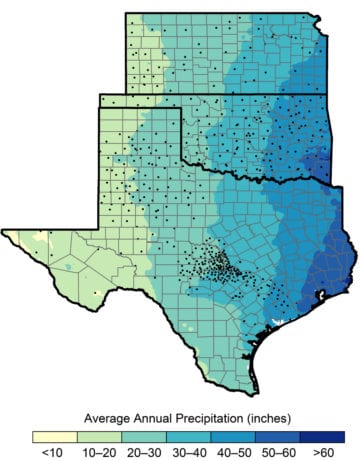
The report also mentions that warmer temperatures and increased rainfall provide ideal breeding conditions for mosquitoes, ticks and fleas, which transmit human diseases. Tropical diseases such as Zika, dengue and chikungunya are becoming more common in South Texas as the Aedes mosquito’s range expands. Heat-related illnesses are expected to rise as temperatures increase, too. The heat wave of 2011 led to a 3.6 percent increase in emergency hospital visits and a 0.6 percent increase in deaths. The report projects that the number of heat-related deaths in the Southern Great Plains region, defined as Texas, Kansas and Oklahoma, will increase by 1,300 per year by the end of the century under a high-warming scenario.
These threats will most acutely affect communities of color, low-income communities, the elderly and children. “Climate change threatens to exacerbate existing social and economic inequalities,” according to the report.
The climate assessment was released just days after President Trump questioned in a tweet whether the planet was warming in light of record cold in parts of the country, seemingly confusing day-to-day changes in the weather with long-term climatic changes.
The report’s release on Black Friday, typically when newsrooms are thinly staffed, led to speculation that the administration was trying to bury the bad news. On a conference call with members of the media on Friday, Monica Allen, a spokesperson for the National Oceanic and Atmospheric Administration, sidestepped questions about the timing and asked journalists to “focus on the contents of the report.”
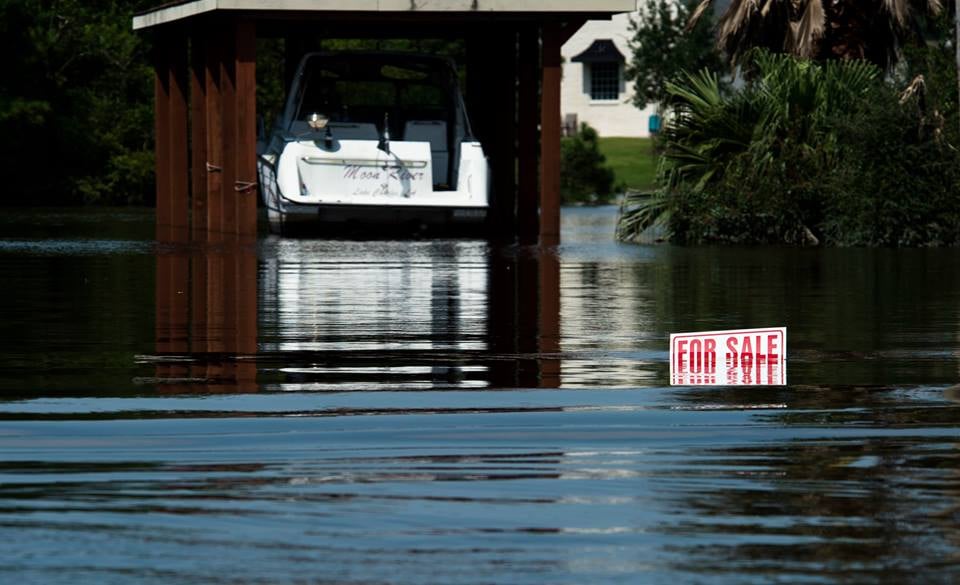
The federal report pointed to several Texas policies as examples of effective adaptation strategies, including the habitat conservation plan for the Edwards Aquifer, the 2007 state law protecting environmental flows in rivers, and a recent “coastal resiliency” plan to protect the coast against storms, beach erosion and other hazards. Still, the report noted that the worst effects of climate change can only be avoided by immediately reducing greenhouse gas emissions. “Future impacts and risks from climate change are directly tied to decisions made in the present,” the assessment reads. Last month, an international body of climate scientists warned that we have just 12 years to act if we want to keep the planet from warming more than 2.7 degrees Fahrenheit.
Luke Metzger, executive director of Environment Texas, said that climate change is no longer a phenomenon that future generations will experience. “We are experiencing worsening, terrible impacts now,” he said in a press release. “It’s up to all of us — from our elected officials, to the companies we buy from, to our families — to study what the scientists say in the report, roll up our sleeves, and solve this existential challenge for our country.”

